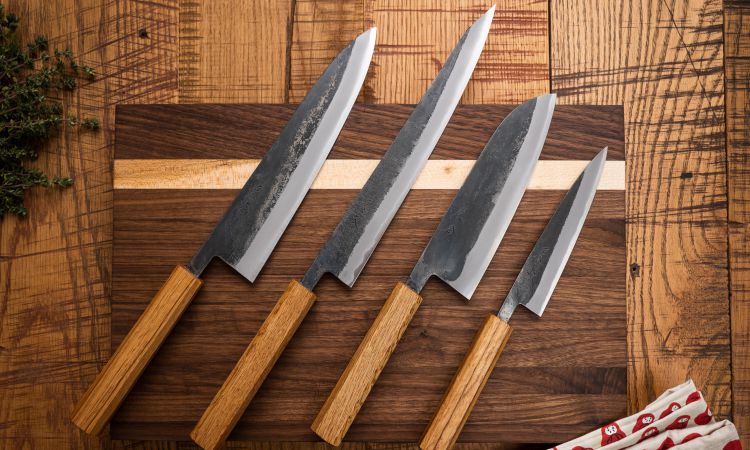 Japanese knives have become increasingly popular in the culinary world for their exceptional sharpness, durability, and beauty. The Japanese have a long history of crafting blades, and their knives, including the Japanese Nakiri knife, are considered some of the best in the world. So, what is so special about Japanese knives? This article will explore the unique features of Japanese knives that make them so exceptional.
Japanese knives have become increasingly popular in the culinary world for their exceptional sharpness, durability, and beauty. The Japanese have a long history of crafting blades, and their knives, including the Japanese Nakiri knife, are considered some of the best in the world. So, what is so special about Japanese knives? This article will explore the unique features of Japanese knives that make them so exceptional.
History of Japanese Knives
Japanese knives have a rich history dating back to the ancient samurai sword-making tradition. The swords were not only functional but also regarded as works of art. This tradition of craftsmanship and attention to detail has been passed down through generations, and today, Japanese knives are among the most sought-after in the world.
Blade Materials
Japanese knives are typically made from high-quality steel that is both hard and durable. The most common types of steel used in Japanese knives are high-carbon steel, VG-10, and Damascus steel. High-carbon steel is a favorite among Japanese knife makers because it holds a sharp edge for an extended period. VG-10 is a type of stainless steel often used in Japanese knives because of its excellent corrosion resistance and durability. Damascus steel is a type of steel that is made by layering different types of steel together. This layering gives the blade a unique and beautiful pattern.
Blade Geometry
The blade geometry of Japanese knives is unique compared to Western knives. Japanese knives are typically thinner and have a sharper edge angle. The thinner blade makes it easier to make precise cuts and reduces the drag on the blade when cutting. The sharper edge angle allows the knife to cut through food with minimal effort, making it ideal for delicate ingredients.
Blade Hardness
One of the key features of Japanese knives is their hardness. Japanese knives are typically harder than Western knives, which means they can hold a sharper edge for longer. The hardness is achieved through heat treatment, which involves heating the blade to a high temperature and then rapidly cooling it. This process makes the blade harder, but it also makes it more brittle. Japanese knife makers use differential hardening to counter this, where the blade’s edge is heated and cooled differently. This process creates a blade that is hard at the edge but more flexible towards the spine.
Handle Materials
The handle of a Japanese knife is typically made from wood, which is carefully selected for its durability and beauty. The handle is designed to fit comfortably in the hand and provide a secure grip, even when wet. The most common types of wood used in Japanese knife handles are magnolia, ebony, and rosewood. Some Japanese knives have a traditional octagonal handle, while others have a modern western-style handle.
Attention to Detail
Japanese knives are known for their attention to detail. Every aspect of the knife, from the blade to the handle, is meticulously crafted and designed to provide the best possible performance. The blade is sharpened by hand to ensure a precise edge, and the handle is shaped to fit comfortably in the hand. Japanese knife makers also take great pride in the aesthetic beauty of their knives. The blade is often decorated with intricate designs, and the handle is polished to a high shine.
In conclusion, Japanese knives are special because of their unique combination of high-quality materials, superior blade geometry, hardness, and attention to detail. Japanese knives are not only functional but also works of art. The craftsmanship and attention to detail that go into each piece, like the Japanese Nakiri knife, make them so sought after by chefs and knife enthusiasts worldwide. If you are looking for a beautiful and functional knife, a Japanese knife may be just what you need.





